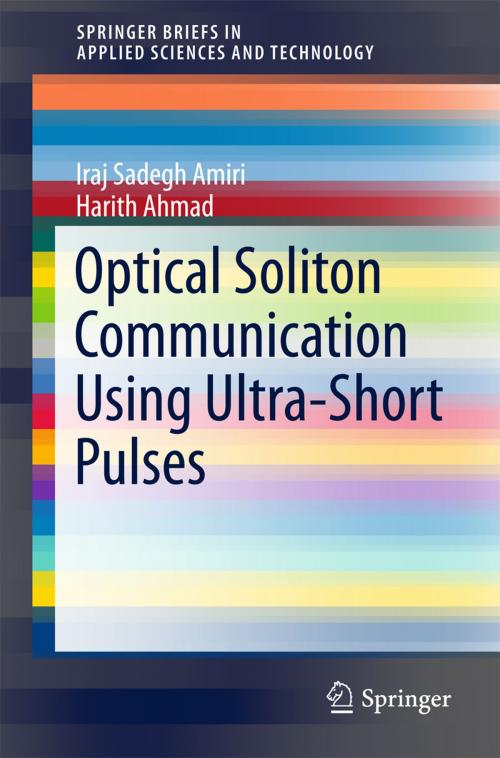Optical Soliton Communication Using Ultra-Short Pulses
Nonfiction, Science & Nature, Technology, Microwaves, Telecommunications| Author: | Iraj Sadegh Amiri, Harith Ahmad | ISBN: | 9789812875587 |
| Publisher: | Springer Singapore | Publication: | May 7, 2015 |
| Imprint: | Springer | Language: | English |
| Author: | Iraj Sadegh Amiri, Harith Ahmad |
| ISBN: | 9789812875587 |
| Publisher: | Springer Singapore |
| Publication: | May 7, 2015 |
| Imprint: | Springer |
| Language: | English |
This brief analyzes the characteristics of a microring resonator (MRR) to perform communication using ultra-short soliton pulses. The raising of nonlinear refractive indices, coupling coefficients and radius of the single microring resonator leads to decrease in input power and round trips wherein the bifurcation occurs. As a result, bifurcation or chaos behaviors are seen at lower input power of 44 W, where the nonlinear refractive index is n2=3.2×10−20 m2/W. Using a decimal convertor system, these ultra-short signals can be converted into quantum information. Results show that multi solitons with FWHM and FSR of 10 pm and 600 pm can be generated respectively. The multi optical soliton with FWHM and FSR of 325 pm and 880 nm can be incorporated with a time division multiple access (TDMA) system wherein the transportation of quantum information is performed.
This brief analyzes the characteristics of a microring resonator (MRR) to perform communication using ultra-short soliton pulses. The raising of nonlinear refractive indices, coupling coefficients and radius of the single microring resonator leads to decrease in input power and round trips wherein the bifurcation occurs. As a result, bifurcation or chaos behaviors are seen at lower input power of 44 W, where the nonlinear refractive index is n2=3.2×10−20 m2/W. Using a decimal convertor system, these ultra-short signals can be converted into quantum information. Results show that multi solitons with FWHM and FSR of 10 pm and 600 pm can be generated respectively. The multi optical soliton with FWHM and FSR of 325 pm and 880 nm can be incorporated with a time division multiple access (TDMA) system wherein the transportation of quantum information is performed.















